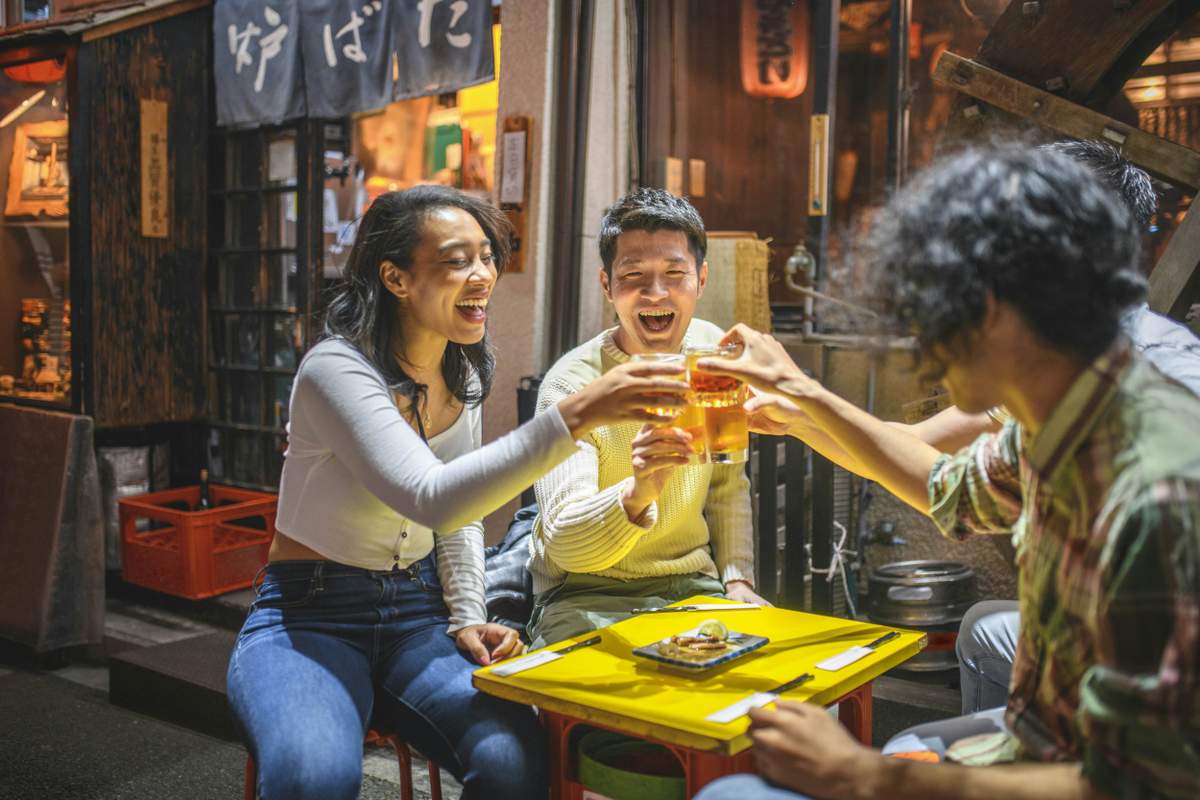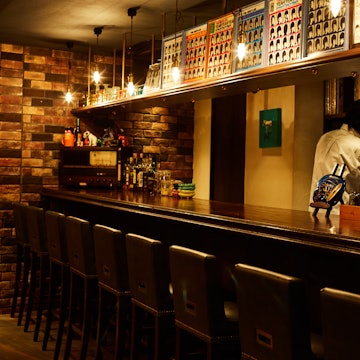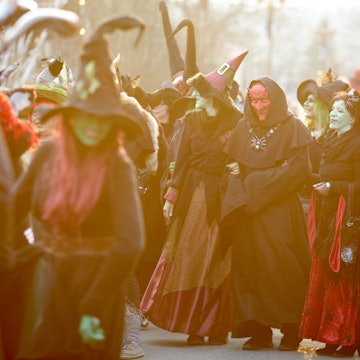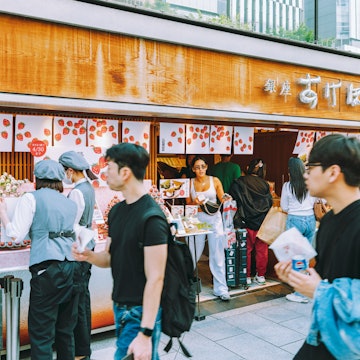

Many travellers to Japan follow the same route, using their JR train pass to go between key cities of Tokyo, Kyoto and Hiroshima. Tokyo will of course be even busier than usual during the summer Olympics, and Kyoto is known to suffer from significant crowds, so if you’re looking to invest your tourist money in a more sustainable way, consider some slow travel in western Japan’s Setouchi region. From visiting temples to getting to know the Japanese art scene, here are the best ways for travellers to support local communities in and around the Seto Inland Sea.

Take the pilgrimage to the 88 temples of Shikoku
One of the top activities on the island of Shikoku is the pilgrimage to the 88 temples of Shikoku. The busiest time for pilgrims is March and April, with a smattering of tourists throughout the year. Compare that to the temples of Kōya-san near Osaka, which are much easier to access, and far more crowded as a result. Whether you are keen on temple architecture or want to learn more about the different sects of Buddhism, with so few pilgrims and tourists wandering around, this experience is incredibly tranquil. And unlike some temples in Kyoto, these are all free to visit.
The full pilgrimage route is around 1400km long, circling the whole of Shikoku. Each of the 88 temples is family-run and has its own characteristics, although all are dedicated to Buddhist priest Kōbō Daishi. The whole route can be completed by car over a couple of weeks, or you could sample one section of it at a time, in any order. Start in Naruto where walking distances between the first five temples are fairly small (Temple One and Temple Two are only a kilometre apart). Pilgrims often complete the route over several years, returning again and again to travel new sections. Unlike some other pilgrimages, there is no requirement to walk the route, so some visitors simply drive the whole circuit.

Cycle the islands of Ōshima and Ōmi-shima along the Shimanami Kaidō
The suspension bridges of the Shimanami Kaidō make up a 70km-long cycle route connecting Imabari in Ehime Prefecture with Onomichi via a series of islands, roads and cycle paths. The opening of the bridges in 1999 made it easier for people to visit the individual islands by car, but it also led to a decline in tourists sticking around overnight. Day-trippers take on sections of the cycle route, and keen cyclists can easily complete it in a few hours, but instead of rushing through, take some time to explore what’s on offer on the individual islands.
On Ōshima island, detour up the steep hills to Kiro-san Observation Park for incredible panoramic views of the bridges and islands of the Inland Sea. Cycle the intermediate route to follow the coastline, parts of which are packed with legends of helpful 16th-century pirates who would guide trade ships through the unpredictable currents.

Ōmi-shima is an absolute joy to linger on. An ongoing sustainable development initiative, named Project Omishima, is supported by the government, and aims to attract tourism, as well as build and maintain a strong sense of identity and community on the island. Architect Toyo Ito is a leader on the project, and the Toyo Ito Museum of Architecture, a striking building perched on a clifftop, showcases stories of local people and their connection with the island and the surrounding natural beauty. Other local enterprises investing in tourism include Ikoinoie, an elementary school that has been converted into comfortable guestrooms, and a winery. You can sample the local wines at Ōmi-shima Wine Bar on the main walkway to Ōyamazumi-jinja, a Shintō shrine with a collection of ancient weapons. Fans of contemporary sculpture should stop by Tokoro Museum and the architectural gem that is Ken Iwata’s Mother and Child Museum.
Bike hire on the Shimanami Kaidō starts from ¥1100 per day, plus deposit. Bikes can be returned to any of the bike hire terminals along the route, but you will lose your deposit. The ramps up to the bridges are fairly long and can be steep, and there are many other hilly sections on the route, so it’s worth considering an e-bike (particularly if you plan to cycle up the winding road to Kiro-san).

Have some beach time on the Kasaoka islands
If sampling some slow-paced island life is your main aim, then look beyond Ō-shima near Tokyo or Shōdo-shima near Okayama, to the restful Kasaoka Islands. They’re about 15km south of the port of Kasaoka, reached by ferry or sea taxi.
Manabe-shima has around 120 residents. Government schemes are helping people who wish to move here and set up tourism-led businesses. Community connections are made to help support residents – the family that runs Inn the Camp and the associated Motoe Cafe receives funding in exchange for providing meals to elderly residents on the island. Pause for a coffee and cake, admire the traditional wooden houses and school building near the port, then take the short, steep walk over the hill to enjoy a seafood set menu feast at Santora on the other side of the island.

Head to Shiraishi-jima, an island of about 400 residents, for a pleasant stroll through the village or follow the trail of small shrines associated with the temple Kairyū-ji to reach a hilltop boulder. With a fabulous view over the beach, International Villa has five rooms, a communal kitchen and sitting area, and a lovely deck area to relax on. Since the Inland Sea has barely any waves, expect your water sports to be kayaking or SUP-ing rather than surfing (ask about equipment rentals at Moooo! Bar), but that just adds to the peaceful mood of the island.

Art Base gallery on Momoshima
A short ferry ride from Onomichi is the island of Momoshima. Here, local government has invested in a new community centre (designed by Toyo Ito) and several new guesthouses are under development. The main sight is Art Base, a former high school building which is now a modern art gallery. Several Japanese artists, including Art Base director Yukinori Yanagi and installation specialist Noriyuki Haraguchi are choosing to exhibit here instead of more mainstream galleries to draw art lovers to the island, sometimes including works that are quite provocative.
You might also like:
How the Oku-Matsushima Trail in Japan made me fall in love with hiking
Island-hopping by bike around Japan’s Seto Inland Sea
Exploring the highlights of Japan’s San-yō region by train
Claire travelled to Japan with support from Setouchi Reflection Trip and British Airways. Direct flights from London Heathrow to Osaka start from £500 return. Lonely Planet contributors do not accept freebies in exchange for positive coverage.
















